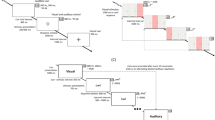Abstract
Heart-brain interaction is by nature bidirectional, and then, it is sensible to expect the heart, via the autonomic nervous system (ANS), to induce changes in the brain. Respiration can originate differentiated ANS states reflected by HRV. In this work, we measured the changes in performance during a cognitive task due to four autonomic states originated by breath control: at normal breathing (NB), fast breathing (FB), slow breathing (SB) and control phases. ANS states were characterized by temporal (SDNN) and spectral (LF and HF power) HRV markers. Cognitive performance was measured by the response time (RT) and the success rate (SR). HRV parameters were acquired with the wristband Empatica E4. Classification was accomplished, firstly, to find the best ANS variables that discriminated the breathing phases (BPH) and secondly, to find whether ANS parameters were associated to changes in RT and SR. In order to compensate for possible bias of the test sets, 1000 classification iterations were run. The ANS parameters that better separated the four BPH were LF and HF power, with changes about 300\(\%\) from controls and an average classification rate of 59.9\(\%\), a 34.9\(\%\) more than random. LF and HF explained RT separation for every BPH pair, and so was HF for SR separation. The best RT classification was 63.88\(\%\) at NB vs SB phases, while SR provided a 73.39\(\%\) at SB vs NB phases. Results suggest that breath control could show a relation with the efficiency of certain cognitive tasks. For this goal the Empatica wristband together with the proposed methodology could help to clarify this hypothesis.
Access this chapter
Tax calculation will be finalised at checkout
Purchases are for personal use only
Similar content being viewed by others
References
Increasing performance of professional soccer players and elite track and field athletes with peak performance training and biofeedback: a pilot study
Respiratory modulation of muscle sympathetic and vagal cardiac outflow in man. J. Physiol. 365, 181–89 (1985)
Respiratory modulation of human autonomic rhythms. Am. J. Physiol.-Heart Circ. Physiol. 280(6), H2674–H2688 (2001)
Claude Bernard and the heart-brain connection: further elaboration of a model of neurovisceral integration. Neurosci. Biobehav. Rev. 33(2), 81–88 (2009). The Inevitable Link between Heart and Behavior: New Insights from Biomedical Research and Implications for Clinical Practice
Neural correlates of heart rate variability during emotion. NeuroImage. 44, 213–222 (2009)
The effect of mindfulness-based therapy on anxiety and depression: a meta-analytic review. J. Consult. Clin. Psychol. 78, 169–183 (2010)
Breathing at a rate of 5.5 breaths per minute with equal inhalation-to-exhalation ratio increases heart rate variability. Int. J. Psychophysiol. 91(3), 206–211 (2014)
Effects of heart rate variability biofeedback on cardiovascular responses and autonomic sympathovagal modulation following stressor tasks in prehypertensives. J. Hum. Hypertens. 30, 105–111 (2015)
Allen, J.: Photoplethysmography and its application in clinical physiological measurement. Physiol. Meas. 28(3), R1–R39 (2007)
Cogan, D., Birjandtalab, J., Nourani, M., Harvey, J., Nagaraddi, V.: Multi-biosignal analysis for epileptic seizure monitoring. Int. J. Neural Syst. 27(01), 1650031 (2017)
Holzman, J.B., Bridgett, D.J.: Heart rate variability indices as bio-markers of top-down self-regulatory mechanisms: a meta-analytic review. Neurosci. Biobehav. Rev. 74, 233–255 (2017)
Maman, P., Garg, K., Singh Sandhu, J.: Role of biofeedback in optimizingpsychomotor performance in sports. Asian J. Sports Med. 3, 29 (2012)
Pozo, J.M.D., Gevirtz, R.N., Scher, B., Guarneri, E.: Biofeedback treatment increases heart rate variability in patients with known coronary artery disease. Am. Heart J. 147(3), 545 (2004)
Schäfer, A., Vagedes, J.: How accurate is pulse rate variability as an estimate of heart rate variability?: A review on studies comparing photoplethysmographic technology with an electrocardiogram. Int. J. Cardiol. 66, 15–29 (2013)
Van Diest, I., Verstappen, K., Aubert, A., et al.: Inhalation/exhalation ratio modulates the effect of slow breathing on heart rate variability and relaxation. Appl. Psychophysiol. Biofeedback 39, 171–180 (2014)
Acknowledgements
We want to acknowledge to Programa de Ayudas a Grupos de Excelencia de la Región de Murcia, from Fundación Séneca, Agencia de Ciencia y Tecnología de la Región de Murcia.
Author information
Authors and Affiliations
Corresponding author
Editor information
Editors and Affiliations
Rights and permissions
Copyright information
© 2019 Springer Nature Switzerland AG
About this paper
Cite this paper
Bonomini, M.P., Val-Calvo, M., Díaz-Morcillo, A., Ferrández Vicente, J.M., Fernández-Jover, E. (2019). Autonomic Modulation During a Cognitive Task Using a Wearable Device. In: Ferrández Vicente, J., Álvarez-Sánchez, J., de la Paz López, F., Toledo Moreo, J., Adeli, H. (eds) Understanding the Brain Function and Emotions. IWINAC 2019. Lecture Notes in Computer Science(), vol 11486. Springer, Cham. https://doi.org/10.1007/978-3-030-19591-5_8
Download citation
DOI: https://doi.org/10.1007/978-3-030-19591-5_8
Published:
Publisher Name: Springer, Cham
Print ISBN: 978-3-030-19590-8
Online ISBN: 978-3-030-19591-5
eBook Packages: Computer ScienceComputer Science (R0)




